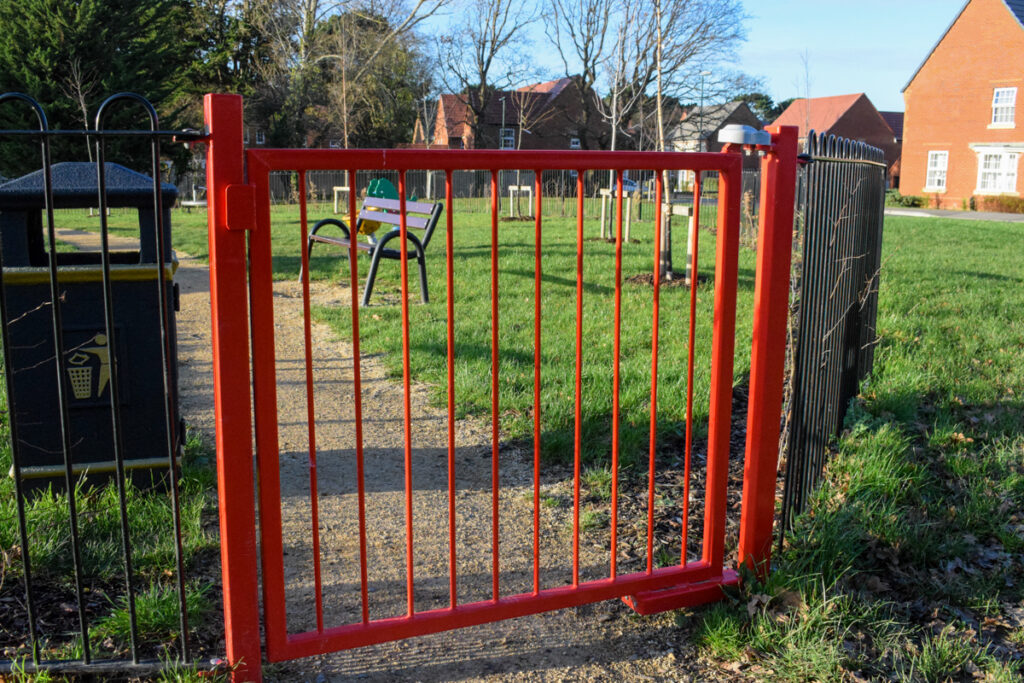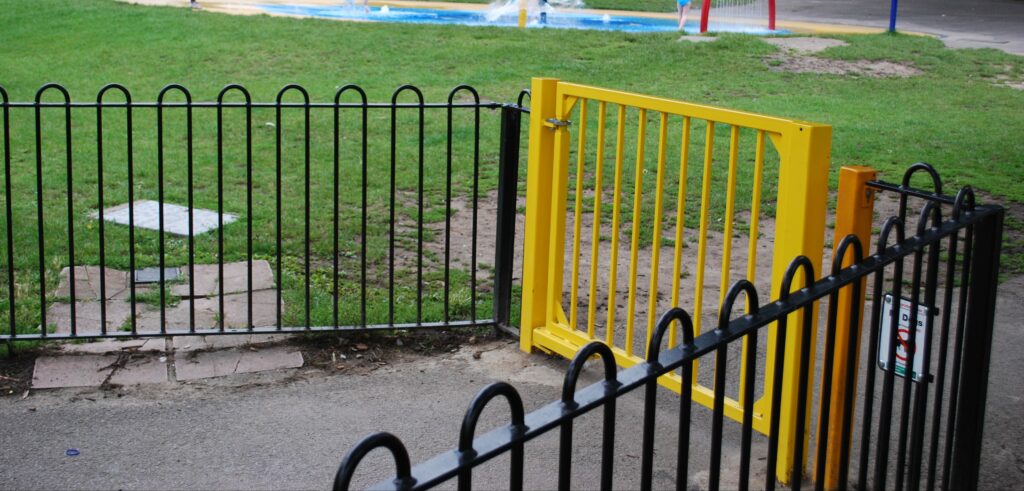How to make self-closing gates safer in public areas

When you send your child to the local playground, you trust that every precaution has been made to ensure their safety.
When it comes to the surrounding fence and gates, you need to incorporate certain safety measures like the right type of fencing and consider features like self-closing gates.
The Royal Society for Prevention of Accidents (or RoSPA) have laid out a series of recommendations for gates, fences and railings on playgrounds, leisure centres, public parks and schools as these are frequently used by children.
One recommendation is to have self-closing gates. This prevents children easily running onto roads or cycle paths and keeps dogs out. But you shouldn’t just install any gate closer as there are specific factors to consider for safe self-closing gates.

Before we dive into the specifics on safe self-closing gates, it is worth knowing that the recommended width of gates to public areas is 1 meter wide. This is to allow for unhindered passage for pushchairs and wheelchairs.
The gate width determines the strength of the gate closer and so this is something you should consider before starting your search for a gate closer.
How to ensure safe self-closing gates
The main purpose of a gate closing mechanism is naturally to close the gate it is installed on. Installing the correct closer can go a long way in ensuring safe self-closing gates for the children using it. The below recommendations from RoSPA will help you achieve this.
Adjustable speed of self-closing gate:
In order to make the gates accessible, it is important to have a gate closer with adjustable speed. The gate should ideally not close any quicker than 5 seconds to allow for wheelchairs to pass through and prevent it striking the back of a child walking through.
Minimizing finger traps:
A common playground injury is unfortunately trapped fingers and hands. It is recommended that gates installed on playgrounds and similar have a minimum gap of 1-1/2″ between the gate and post on both sides. This gap should be maintained when the gate is closing, so a hinge with a non-reducing gap is the way to go. Some gate closers, like our hydraulic APS, are installed with a hinge kit as well to help fulfil this.
Maintain sufficient ground clearance:
Children dart in and out of playgrounds and parks, usually in full speed and tripping is quite common. To help avoid foot injuries and reduce trip hazards, a clearance of between 2-3/8″ and 4-3/8″ should be maintained beneath the gate. In addition, the ground should be level to prevent this gap closing through the range of movement.
A gate closing mechanism helps keep the surroundings a bit safer for children when playing on the local playground. However, knowing, considering, and implementing the above safety recommendations ensures that a gate closer won’t add any additional and unnecessary hazards.
Speak to our advisors today to find a suitable and RoSPA compliant gate closer.
These are just some of the recommendations regarding gates and fences in public areas; if you want more information, visit the RoSPA website
